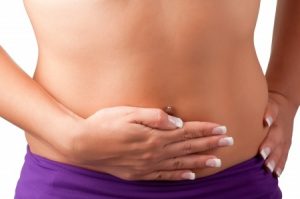
How many of you have heard that taking antibiotics increases your chance of getting a yeast infection?
Would you like to know why?
How Antibiotics Work
Antibiotics fight bacterial infections by killing bacteria or slowing down and suspending its growth. They do this by attacking the wall or coating surrounding the bacteria, and this also interferes with its reproduction.
Antibiotics supposedly kill bacteria without harming any of the cells in your body by interfering with the way bacteria live and grow. So why do antibiotics exacerbate yeast growth if they are designed to not harm any other cells, which includes your gut flora?
Here’s why …

Yeast Is A Fungus
Antibiotics do not kill fungi, and yeast is a fungus, like mold. Antibiotics kill other types of germs (like bacteria), so, you are more prone to getting a fungal infection if you take antibiotics because they eliminate your good gut bacteria but leave any yeast/fungus alone.
Penicillin and cephalosporin, for example, kill bacteria outright by directly attacking the bacterial cell wall, which injures the cell. This disarms the bacteria so that it can no longer attack the body by preventing these cells from doing any further damage.
And remember that your good gut bacteria helps keep your gut healthy and strong.
Tetracycline and erythromycin, 2 more examples, block your bacteria’s growth and reproduction by preventing nutrients from reaching the bacteria, and this stops them from dividing and multiplying.
Meanwhile, gut fungus is left alone to grow and reproduce.
Antibiotics were originally designed to stop infection with the hope that they would give your body’s own immune system time to attack.
Back in the day, people were supposed to stay on antibiotics for no more than 6 weeks. Today, people take too many antibiotics and for longer time periods, if not on-going.

Gut Bacteria
Your gut microbiota (which are specific microorganisms found living inside your gastrointestinal tract ) contain tens of trillions of microorganisms, including at least 1000 different species of known bacteria with more than 3 million genes.
Your microbiota includes bacteria, viruses, and fungi, which are mostly found inside of your gut, but are also found in your skin and inside your nose and mouth.
Good bacteria has an important, positive impact on your health and disease prevention.
Your microbiota is important to nutrition by helping you get nutrients from your food, aiding your immune system, and has positive effects on your brain and behavior.
Your gut microbiome plays a very important role in your health by helping control digestion and the assimilation of nutrients. An imbalance of unhealthy and healthy microbes in your intestines can contribute to weight gain, high blood sugar, high cholesterol and other disorders.
Your good gut flora helps to neutralize toxic by-products from digestion, reduces harmful substances (such as toxins and carcinogens), and discourages bad bacteria and yeast from reproducing. It also helps to stimulate your digestive process and aid in the absorption of nutrients, as well as producing vitamins B and K.
The Connection Between Good And Bad Bacteria
So, if antibiotics fight bacterial infections by killing bad bacteria, slowing down and suspending its growth, AND your gut contains tens of trillions of microorganisms and good bacteria, how does the antibiotic know which bacteria is good or bad?
It doesn’t.
Antibiotics alter your gene expression, metabolic hormones in your blood, and the number of cells that regulate immune responses. Antibiotics disturb your good gut bacteria, which promotes and accelerates the development of gut inflammation.
In a nutshell, antibiotics can’t discriminate the good bacteria from the bad bacteria, and it allows yeast/Candida and fungal growth to go unchecked. They slow the growth of the good guys, block nutrition to good bacteria, and interrupt your immune system.
Unless the good bacteria is restored immediately, the bad bacteria and fungus, like yeast, go crazy.
This can result in yeast infections, skin eruptions, and an increase in allergies – all symptoms that reflect the presence of yeast.
What To Do
Antibiotics are very important and effective when treating serious infections, so if you need to take an antibiotic, make sure your gut microbiota is protected, especially if you have Candida.
Take a probiotic during and after your antibiotic treatment – but take them about 2 hours apart.
I am a big acidophilus fan, and Lactobacilli and Saccharomyces probiotics are also effective.

Probiotic Foods
Eating prebiotic foods can help restore the gut microbiota if damaged by antibiotics. Some foods can reduce yeasty side effects, while others can make them worse.
Foods with probiotics are typically labeled with “live cultures” or “active cultures.” Many fermented products contain probiotics, which means the bacteria in them are still living.
Examples of probiotic foods:
- aged cheeses, such as cheddar, gouda, or mozzarella
- kefir, a probiotic milk drink
- fresh, sour dill pickles
- kombucha
- miso
- fermented soybeans
- sauerkraut
- tempeh
- water or brine-cured olives
- traditional buttermilk (must not be cultured)
- yogurt (including non-dairy yogurts)
NOTE:
Probiotics are bacteria themselves, so they can also be killed by antibiotics if taken together. So, when taking a probiotic at the time you are taking an antibiotic, it is important to take antibiotics and probiotics a few hours apart.
Probiotics should be taken after you have finished your antibiotics in order to restore some of the healthy bacteria in the intestines that may have been killed.
After using an antibiotic, it is best to take one that contains a mixture of the different species of probiotics, as opposed to just one type of probiotic, and both should be taken a few hours apart when using a probiotic at the time you are taking an antibiotic.
_____________
If you want to learn more about health and wellness, contact me at janethull.com. Remember that you are never alone when you are looking for good health!
Gain access to all of my online programs, ongoing support, monthly Q&A, and more by joining my Private Inner Circle Membership Program. I look forward to supporting you on your journey to alternative health and wellness.
_____________
Disclaimer: This article is for informational purposes only, and is educational in nature. The FDA may not have evaluated some of the statements. This article is not intended to diagnose, treat, cure, or prevent any disease. Please discuss with your own, qualified health care provider before adding supplements or making any changes to your dietary program.
Before taking vitamins, consult your doctor; pre-existing medical conditions or medications you are taking can affect how your body responds to multivitamins.
You have our permission to reprint this article if you attribute us with a live back-link to this article and the youtube links. https://janethull.com/